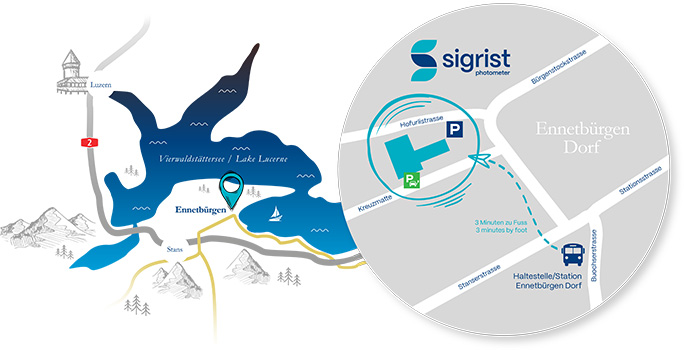Ozone, a powerful oxidizing agent, is used in many chemical processes and for sterilization in water treatment plants (drinking water treatment). Generators produce the ozone from air or oxygen with the aid of electrical discharges. It is then brought into contact with the medium being treated in reaction chambers.
The ozone demand depends on the nature and quantity of the constituents reacting with the ozone. Things are complicated by the fact that the ozone generators are incapable of delivering a steady concentration, even if a constant flow rate is maintained. Consequently, the continuous measurement of concentration is crucial: following the generators it is used to monitor the quantity produced, and at the reactor outlets it detects the residual concentration.
In the German Standard Method, photometric measurement is referred to as a quantitative measurement technique independent of calibration. However, it is a prerequisite that the absorption is measured with monochromatic light of wavelength 254 nm and that the instrument reading corresponds to an unambiguous extinction value. The SIGRIST photometer meets both requirements: combining an Hg low-pressure bulb with an interference filter guarantees monochromaticity, and the measuring method (alternating beam method) ensures an unambiguous correlation between the extinction and the reading. Under these circumstances the extinction coefficient is 3024 l/mol cm (according to DIN 19627 and IOA, International Ozone Association), and this type of ozone measurement can be regarded as an absolute measurement requiring no calibration with ozone.
The concentration readings (e.g. in g/m3 are valid for the pressures and temperatures prevailing during measurement. If they have to be converted to standard conditions (e.g. g/Nm3 , the following formula applies:
$K = K' \cdot \left( \frac{1013}{p} \right) \cdot \left( 1 + 0.00367 \cdot t \right)$
| $K$ |
concentration under normal conditions (0°C, 1´013 mbar) |
| $K'$ |
concentration measure under the specific conditions at the measurement location |
| $p$ |
pressure in the flow cell in mbar |
| $t$ |
temperature in the flow cell in °C |
Therefore the effect of the ambient conditions on the concentration is:
$\frac{-3\%}{+10°\text{C}}$ und $\frac{+1\%}{+10 \text{mbar}}$
The relations between the concentration units normally used are:
$\frac{1 \, \text{g}}{N\text{m}^{3}} = 0.047\,\% \; \text{Vol} = 0.077\% \, \text{Gew.}$
With Nm3 being a cubic meter of standard volume which converts temperature and pressure to the same standard state.
